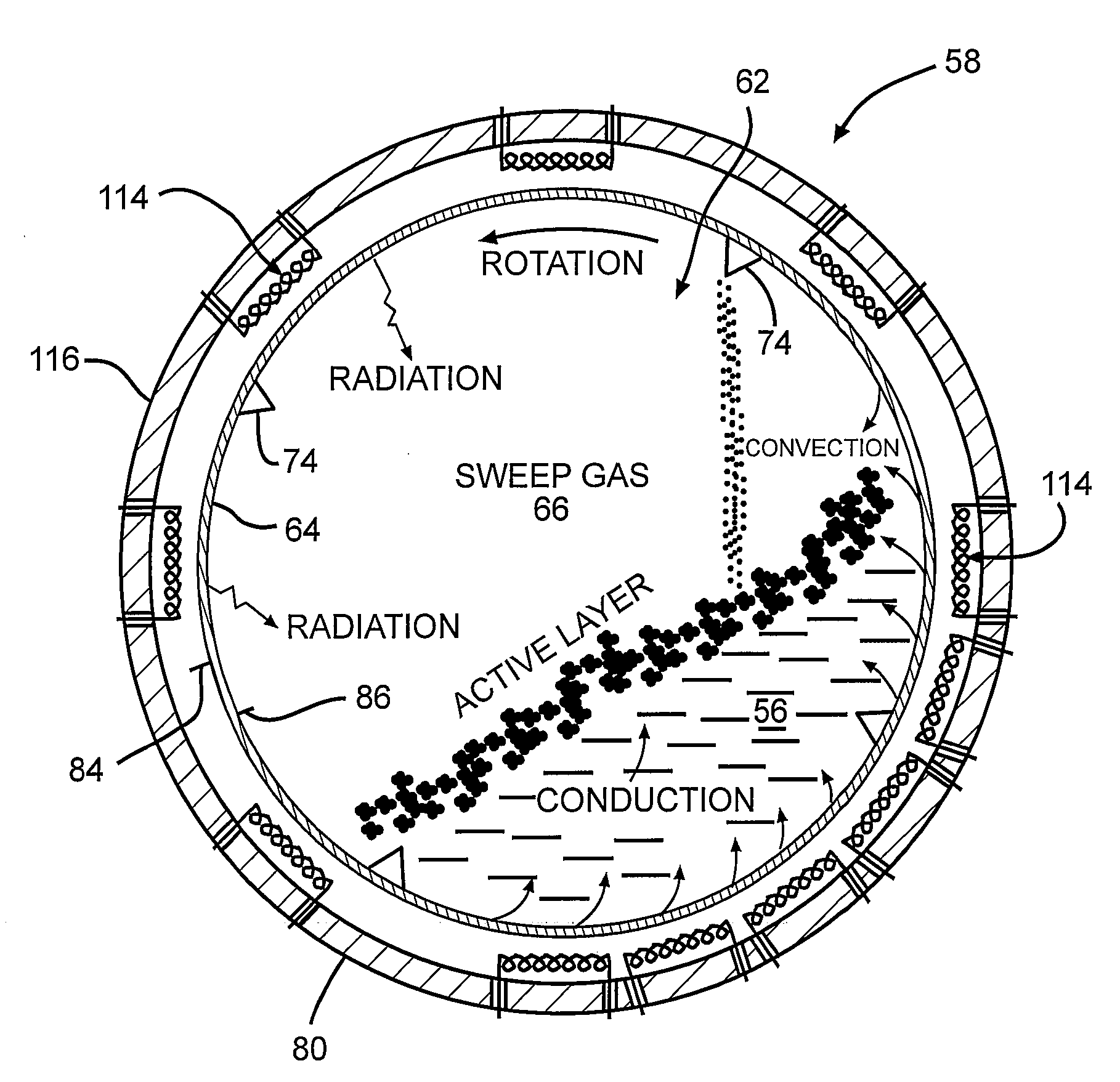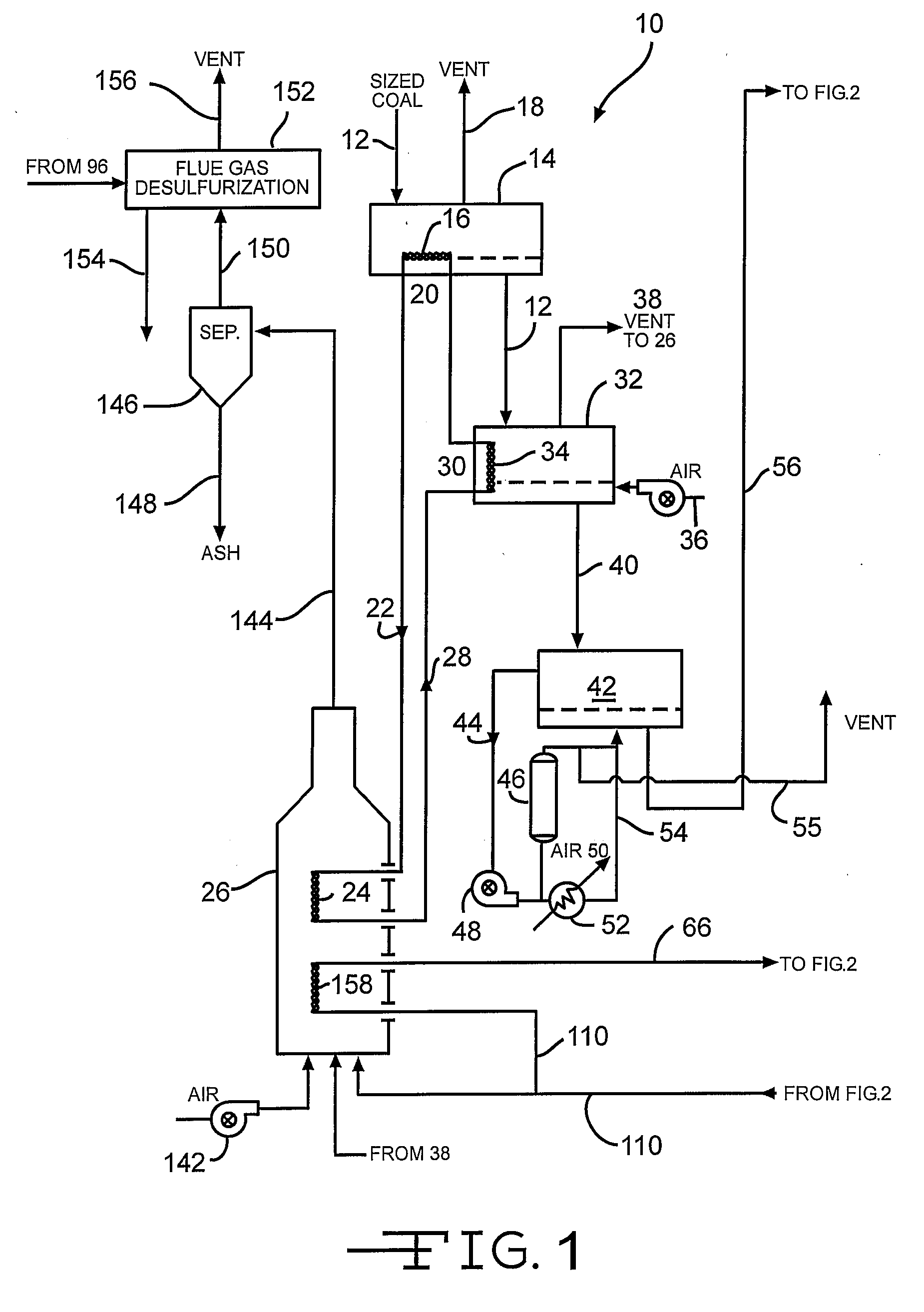Process for treating agglomerating coal by removing volatile components
a technology of volatile components and coal char, which is applied in the field of coal processing, can solve the problems of difficult effective removal of volatile components such as mercury, coal char, coal ash,
- Summary
- Abstract
- Description
- Claims
- Application Information
AI Technical Summary
Benefits of technology
Problems solved by technology
Method used
Image
Examples
example i
[0087]The content of the resultant coal char product according to the process described herein is shown in Table 1 below. It is to be understood that the composition of the resultant coal char product is very much a function of the feed coal, and laboratory testing is needed to verify yields for each product for various types of bituminous coals.
TABLE 1Pulverized Coal Char CharacteristicsAs ReceivedPulverizedCoalChar ProductMoisture6.151.50Ash9.7810.50Volatile39.4518.00Fixed Carbon44.6270.00100.00100.00Sulfur4.091.76Pyritic2.060.81Sulfatic0.140.20Organic1.890.75Heating Value12,170BTU / lb13,150BTU / lb
example ii
[0088]FIG. 6 is a schematic graph illustrating the thermogravimetric analysis (TGA) of Western Kentucky, Ohio County, bituminous coal (Seam 11). Seam 11 coal had an initial free-swelling index (FSI) of 4, which was lowered to 1 according to the process described herein. It should be understood that the Elapsed Time is not representative of actual practice. During the pretreatment (oxidation) step, the oxygen uptake was 1.2%, with oxidation completed at 550° F. The coal was then pre-heated to 900° F. from 550° F., which pre-heating caused removal of about 3.5% of coal volatiles plus the carbon-oxygen compounds formed on the surface of the coal particles during the prior oxidation step. During the pyrolysis step, the pre-heated coal was heated to a temperature of 1100° F., with about 18.5% of the remaining coal volatile components being removed from the treated coal.
example iii
[0089]FIG. 7 is a schematic graph illustrating the thermogravimetric analysis (TGA) of Western Kentucky, Ohio County, bituminous coal (Seam 13). Seam 13 coal had an initial free-swelling index (FSI) of 4, which was lowered to 1 according to the process described herein. It should be understood that the Elapsed Time is not representative of actual practice. During the pretreatment (oxidation) step, the oxygen uptake was 1.5%, with oxidation completed at 550° F. The coal was then pre-heated to 900° F. from 550° F., which pre-heating caused removal of about 2.5% of coal volatiles plus the carbon-oxygen compounds formed on the surface of the coal particles during the prior oxidation step. During the pyrolysis step, the pre-heated coal was heated to a temperature of 1100° F., with about 16% of the remaining coal volatile components being removed from the treated coal.
[0090]Gases from Seam 13 were analyzed using the Fourier Transform Infrared Spectrometer (FTIR). The objective was to dete...
PUM
| Property | Measurement | Unit |
|---|---|---|
| Temperature | aaaaa | aaaaa |
| Temperature | aaaaa | aaaaa |
| Temperature | aaaaa | aaaaa |
Abstract
Description
Claims
Application Information
 Login to View More
Login to View More - R&D
- Intellectual Property
- Life Sciences
- Materials
- Tech Scout
- Unparalleled Data Quality
- Higher Quality Content
- 60% Fewer Hallucinations
Browse by: Latest US Patents, China's latest patents, Technical Efficacy Thesaurus, Application Domain, Technology Topic, Popular Technical Reports.
© 2025 PatSnap. All rights reserved.Legal|Privacy policy|Modern Slavery Act Transparency Statement|Sitemap|About US| Contact US: help@patsnap.com



